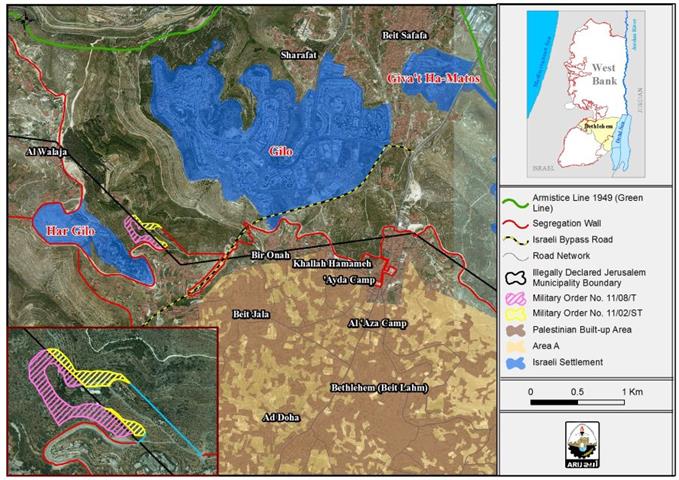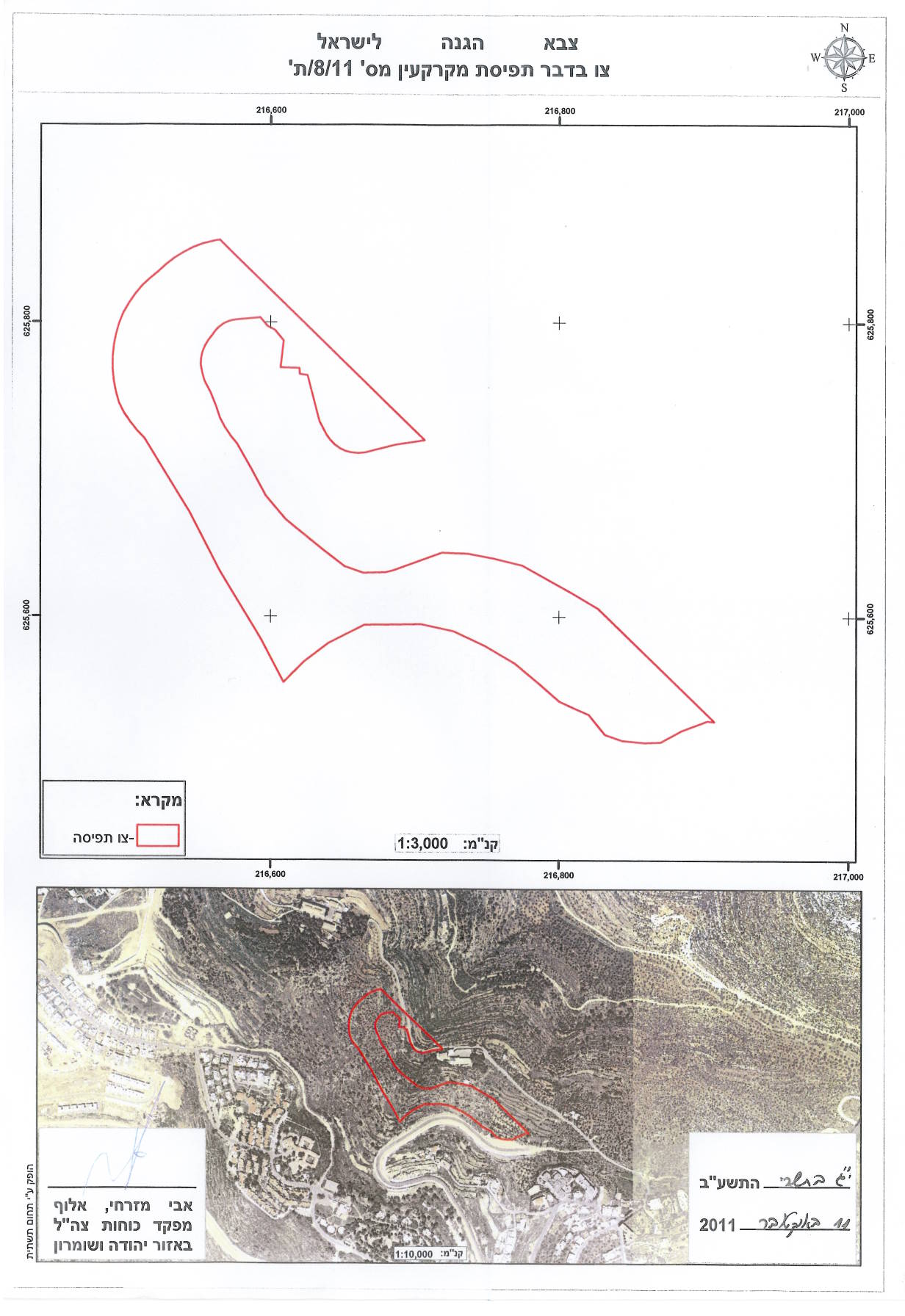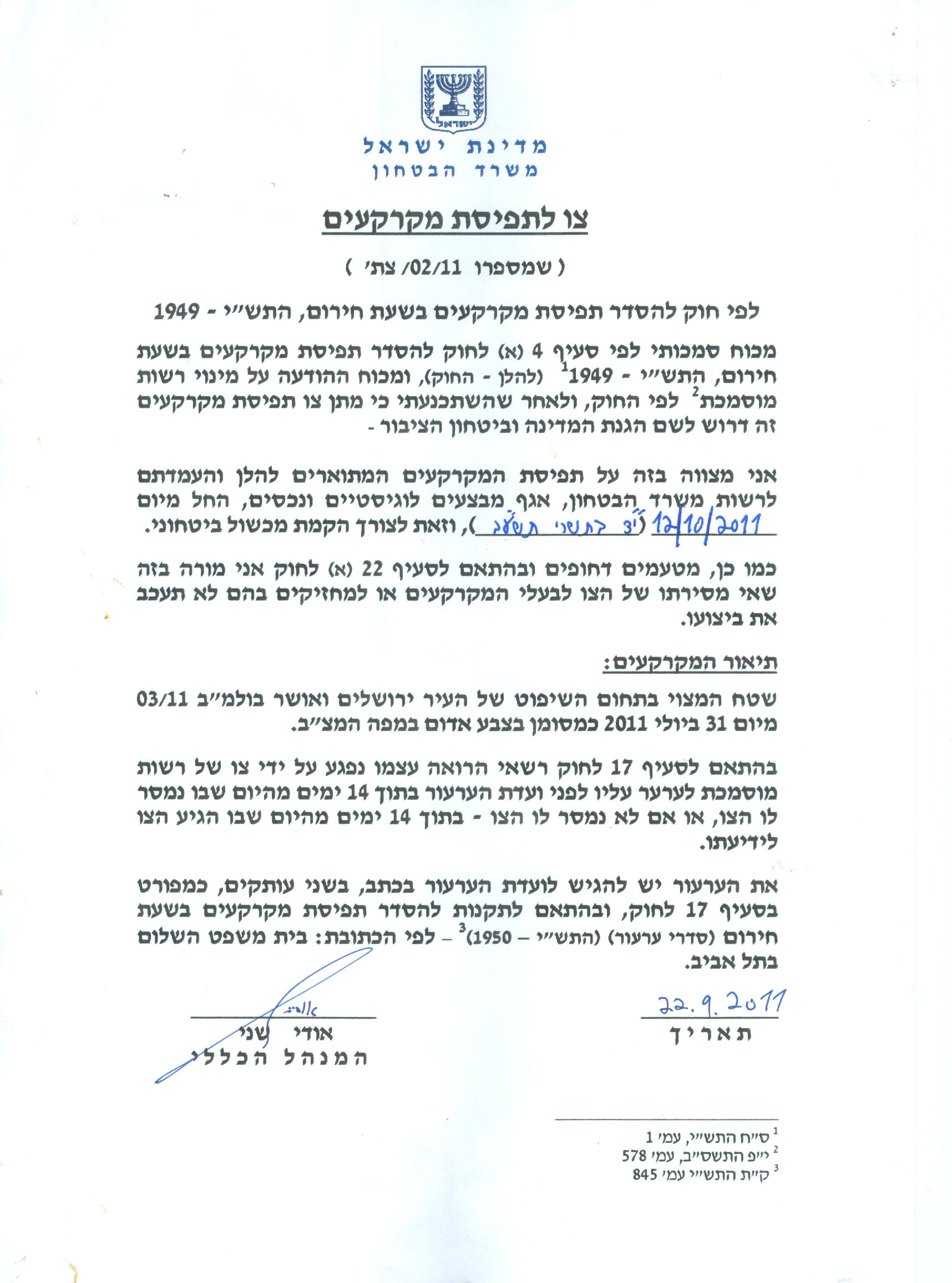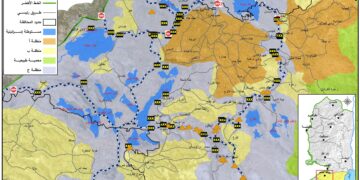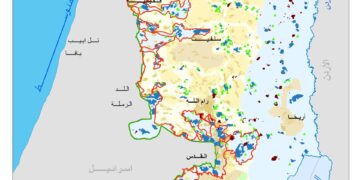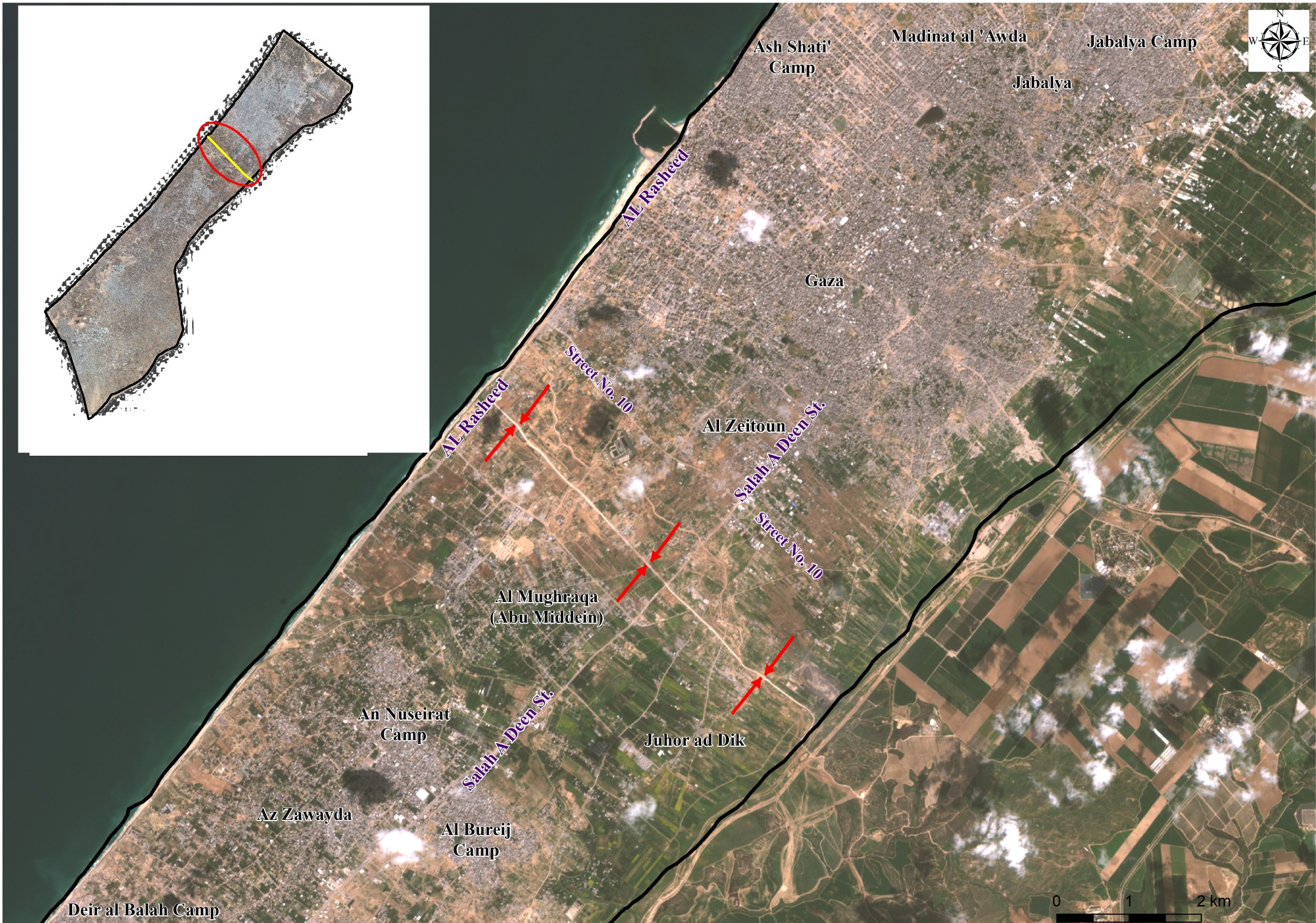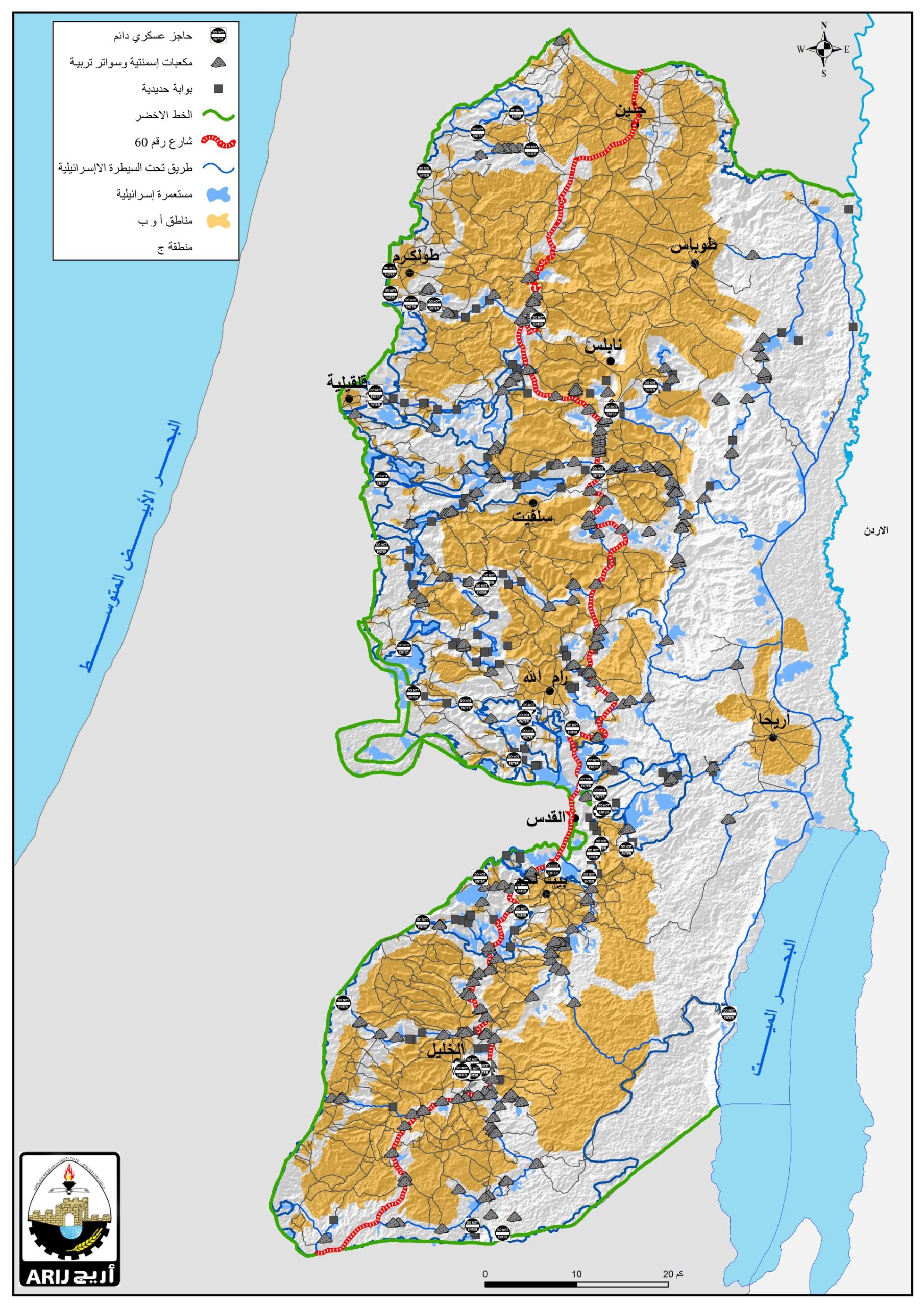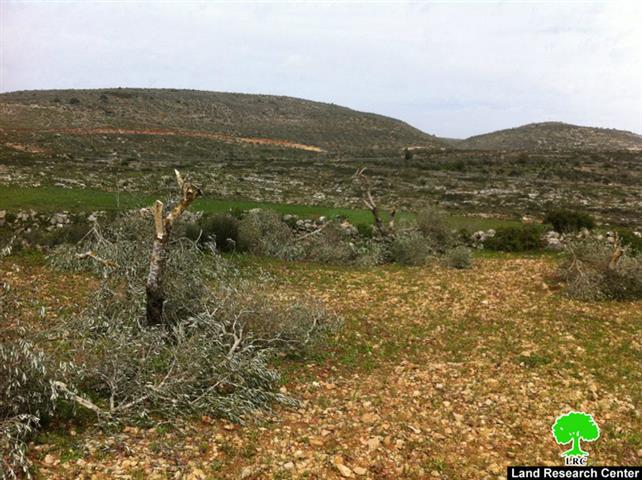On the 4th of February 2014, the Israeli daily newspaper, Haaretz, published on its website that the Israeli Supreme court has requested the State of Israel to explain its refusal to change the route of the Segregation Wall in Cremisan Valley area in Beit Jala city. The order came one week after the Israeli Supreme court held its hearing on the Israeli Segregation Wall on the 29th of January 2014, to discuss the objections and petitions filed by 58 local Palestinian families of Beit Jala city and the Salesian Sisters Convent pleading to redirect the route of the wall due to the negative impacts it will impose on land owners and their properties, if implemented. The Israeli court also gave the state of Israel till the 10th of April 2014 to reply to the court regarding the route of the Segregation Wall, and explain why it won’t change the route of the wall in that specific area. Meanwhile, the court ordered that work on the Segregation Wall is frozen until a final decision is made regarding the case.
The Israeli Segregation Wall plan in Cremisan Valley area
According to the latest revised route of the Israeli Segregation Wall that was published on the Israeli Ministry of Defense website on the 30th of April, 2007, the wall will annex Har Gilo settlement to the Jerusalem Municipality border (which was unilaterally and illegally redrawn back in 1967 on the expense of Palestinian lands), along with Giv’at Hamatos and Har Homa settlements which were illegally established on lands of Bethlehem and Beit Sahour lands back in 1991 and 1997 respectively, that is in addition to annexation of Cremisan Valley land and the surrounding Palestinian areas to become under the full Israeli sovereignty.
It is worth pointing out that part of the Cremisan valley land is located within the illegally declared Jerusalem Municipality border while the remaining land is classified as “C” area, which according to OSLO II Interim Agreement of 1995, falls under the full Israeli control, in terms of security and administrative. Additionally, if the Israeli segregation wall route is implemented in the area, it will separate the Salesian Sisters Convent and the School affiliated to it , from the Cremisan Monastery and Wine Cellar as the wall will surround the Sisters Convent and School and another house located in the area (owned by a Palestinian family) from three directions while it will leave the east side open so that the sisters (Nuns), the Palestinian family, and the locals who attend the school will be able to access the center of Life in Bethlehem area.
Earlier on the 13th of October 2011, the Beit Jala Municipality received two Israeli military orders stipulating a change in the route of the Segregation Wall in the Cremisan Valley area. The first military order holds number 11/08/T and was issued on the 22nd of September 2011. The order, which was signed by Avi Mezrachi, Head of Israeli Central Command in the Israeli occupation forces in the West Bank (that time), stipulates the confiscation of 37.3 dunums of lands to reroute the path of the wall in Beit Jala city, and most specifically, the section east of Har Gilo settlement.
Photo 1 & 2: Military order number 11/08/T
While the second Israeli military order holds number ST/02/11 and was issued and signed by the director of the so called “Israeli Ministry of Defense” since the targeted land is located inside the unilaterally declared boundary of Jerusalem Municipality; The order stipulates the confiscation of 15.2 dunums of lands of Beit Jala city to reroute the path of the Segregation wall in the area.
Photo 3 & 4: Military order number ST/02/11
Beit Jala Municipality along with the affected Palestinian land owners and the Salesian Sisters Convent petitioned their case to the Israeli Special objections Committee ruled[1] at the Israeli Reconciliation Court in Tel Aviv and stating their rejection of the land confiscation and the route of the wall. The committee set the 12th of February 2013, as the final hearing on the route of the Israeli Segregation Wall. After two and a half months on the final hearing [2], the Israeli objections committee issued on the 26 of April 2013 its ruling to continue the construction of the Israeli Segregation Wall on land of Cremisan Valley in Beit Jala city, while ignoring the adverse repercussions it will impose on all walks of Palestinian life, in that,
- It will cause the confiscation of 3147 dunums of lands of Beit Jala city (22% of the total city area) upon completion.
- the wall will separate Beit Jala’s most strategic and historical area from the rest of the city itself; additionally, it will isolate Beit Jala’s most agricultural and open spaces from lands owners, to become under the full Israeli sovereignty.
- Upon wall completion, the Israeli occupation Authorities will also control the entry and exit of Palestinians to their isolated land.
The Israeli court had earlier stated it will make sure that the Israeli occupation Authorities facilitate the entry of Palestinians to their isolated lands (once the wall is constructed) as the Authorities will construct a gate through which Palestinian land owners can use to access their lands; However, this hasn’t been the case of the many Palestinian villages affected by the Wall in the occupied West Bank, because the Israeli occupation authorities are not easy to deal with when it comes to the security of settlers and settlements; In these Villages (which are affected by the wall), the Israeli Authorities only allow Palestinians to enter to/access their lands on seasonal basis, such as the olive harvest season. Entrance to the isolated agricultural lands is only allowed to Palestinians who are able to prove landownership through a credited Israeli organization (most likely to be the civil administration) and only owners whose names listed in the ownership deeds (usually the eldest of the families) receive permits. Hence Palestinian land owners of Beit Jala will definitely, find a hard time access their agricultural lands on their own especially that the permits do not include additional labor or equipment. See Map 1
Map 1: The Israeli Segregatiom Wall plan on lands of Cremisan Valley Land
The impact of the wall on the Salesian Sisters School
- The construction of the Israeli Segregation Wall on Cremisan Valley land, and most especially, on the land owned by the Salesian Sisters Convent in the area, will put the educational process for 400 students ( from the cities of Bethlehem, Beit Jala and Beit Sahour and Al Walajeh village ) who attend the school in danger because the wall will surrounded the Convent and the school from all directions except for the eastern side which leads to the center of life in the towns of Beit Jala and Bethlehem.
- The construction of the wall will also hinder the expansion of the school in the future to include more class rooms ; therefore, school children of the fifth grade (which is the last stage in the school at the moment), will be forced to move to other schools in Bethlehem or Beit Jala cities to complete their education, which in turn, will add a burden on the families that benefit from the educational services offered by the school especially that the school charges minimal fees in order to help the poor and needy families in the area. It should be noted that the Salesian Sisters School school includes also a kindergarten and offers educational programs to children with learning difficulties and summer programs that are held during school summer holidays.
- The land owned by the Salesian Sisters Convent is considered a source of income to many Palestinian families who work in the area. If Israel implements its segregation plan in the area, tens of Palestinian families will have to experience the work permit-issue which will only be granted on conditional basis.
To Conclude
The truth is that Israel, through the construction of the wall, is trying to redefine the boundaries of Jerusalem Municipality one more time in defiance of the International Law and Human conventions. Israeli is also manipulating the demographic and geographic realities in the city of Jerusalem in favor of the Israelis and to achieve this, it is constructing the wall and annexing more Israeli settlements to its proper, while excluding Palestinian communities out of the city, so that at the end, it guarantees a Jewish majority in the city.
The construction of the Israeli Segregation Wall on lands of Cremisan Valley is never about “maintaining the safety and security of the citizens of Israel” , but the first and foremost goal is to annex as much Palestinian land as possible and impose bitter realities to isolate and Judaize Jerusalem prior to any final peace agreement with the Palestinians.
Additionally, the construction of the Israeli Segregation around Jerusalem reveals the gradual application of Israel's 'Greater Jerusalem' scheme which includes the annexation of the three major Israeli settlement blocks surrounding Jerusalem, Ma’ale Adumim in the east, Giv’at Zeev in the west and the Gush Etzion Settlement bloc. in the south of Jerusalem, that is in addition to annexing Gilo, Har Gilo, Har Homa and Giv’at Hamatos settlements which do not follow (administratively) any of the previously mentioned settlement blocs. but form a settlement belt that links the Israeli settlement blocks south of the West Bank (Gush Etzion and Kiryat Arba) with Israeli settlements inside Jerusalem.
[1] Military Order #172 (1967) – establishes the Military Objections Committee to hear appeals concerning decisions of the Custodian of Absentee Property (amended by M.O.406 and others) and other land appropriation judgments of the Israeli Military and Government. Complainant carries the burden of proof of land ownership. He must produce complete surveys of property by licensed surveyor (very expensive), and sworn statements from authorities proving details of his claim, with copies, within 45 days. This committee is not required to publish it's judgments in local newspapers (as required by Jordanian Law), but only to post in the halls of its own offices. (ISRAELI MILITARY OPPRESSION AND EXPLOITATION OF PALESTINIAN SOCIETY IN GAZA AND THE WEST BANK: HOW IT WORKS, by David A. Kirshbaum)
[2] Which took place on the 12th of February 2013
Prepared By
The Applied Research Institute – Jerusalem
ARIJ

